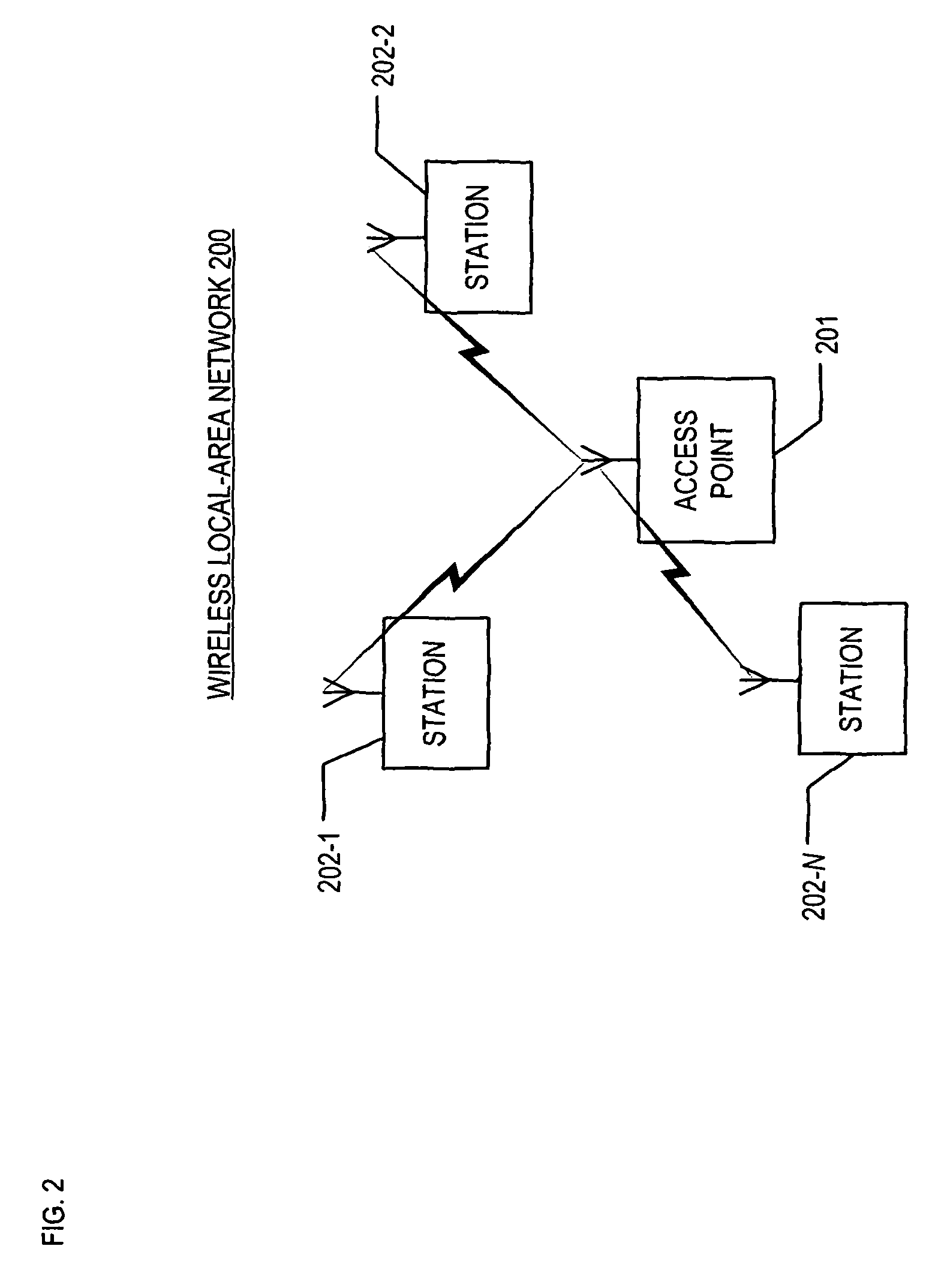Power-saving mechanism for periodic traffic streams in wireless local-area networks
a technology power saving mechanisms, applied in the field of wireless local area networks, can solve the problems of ill-suited automatic power saving delivery mechanisms for traffic with delay/jitter quality-of-service requirements
- Summary
- Abstract
- Description
- Claims
- Application Information
AI Technical Summary
Benefits of technology
Problems solved by technology
Method used
Image
Examples
Embodiment Construction
[0033]FIG. 2 depicts a schematic diagram of local-area network 200 in accordance with the illustrative embodiment of the present invention. Local-area network 200 comprises access point 201, and stations 202-1 through 202-N, wherein i is a positive integer in the set {1, . . . N}, interconnected as shown.
[0034]Station 202-i is capable of (i) generating frames, (ii) transmitting frames over a shared-communications channel to access point 201, and (iii) receiving frames from the shared-communications channel. In some embodiments, station 202-i might also able to communicate in peer-to-peer fashion (i.e., transmitting to and receiving frames from other stations directly instead of via access point 201). Station 202-i is capable of entering power-save mode and of receiving and transmitting frames while in power-save mode as described below and with respect to FIG. 6.
[0035]Access point 201 is capable of receiving frames from and transmitting frames to stations 202-1 through 202-N via a s...
PUM
 Login to View More
Login to View More Abstract
Description
Claims
Application Information
 Login to View More
Login to View More - R&D
- Intellectual Property
- Life Sciences
- Materials
- Tech Scout
- Unparalleled Data Quality
- Higher Quality Content
- 60% Fewer Hallucinations
Browse by: Latest US Patents, China's latest patents, Technical Efficacy Thesaurus, Application Domain, Technology Topic, Popular Technical Reports.
© 2025 PatSnap. All rights reserved.Legal|Privacy policy|Modern Slavery Act Transparency Statement|Sitemap|About US| Contact US: help@patsnap.com



